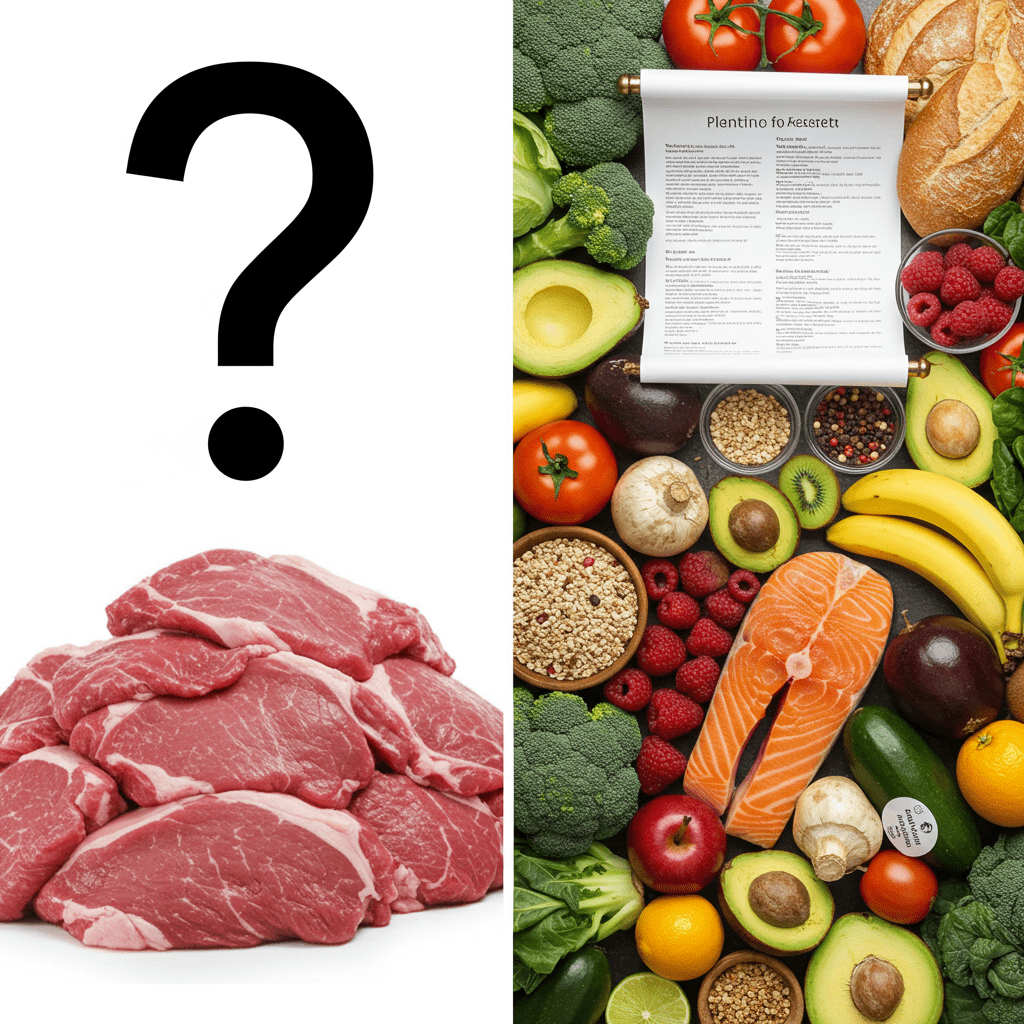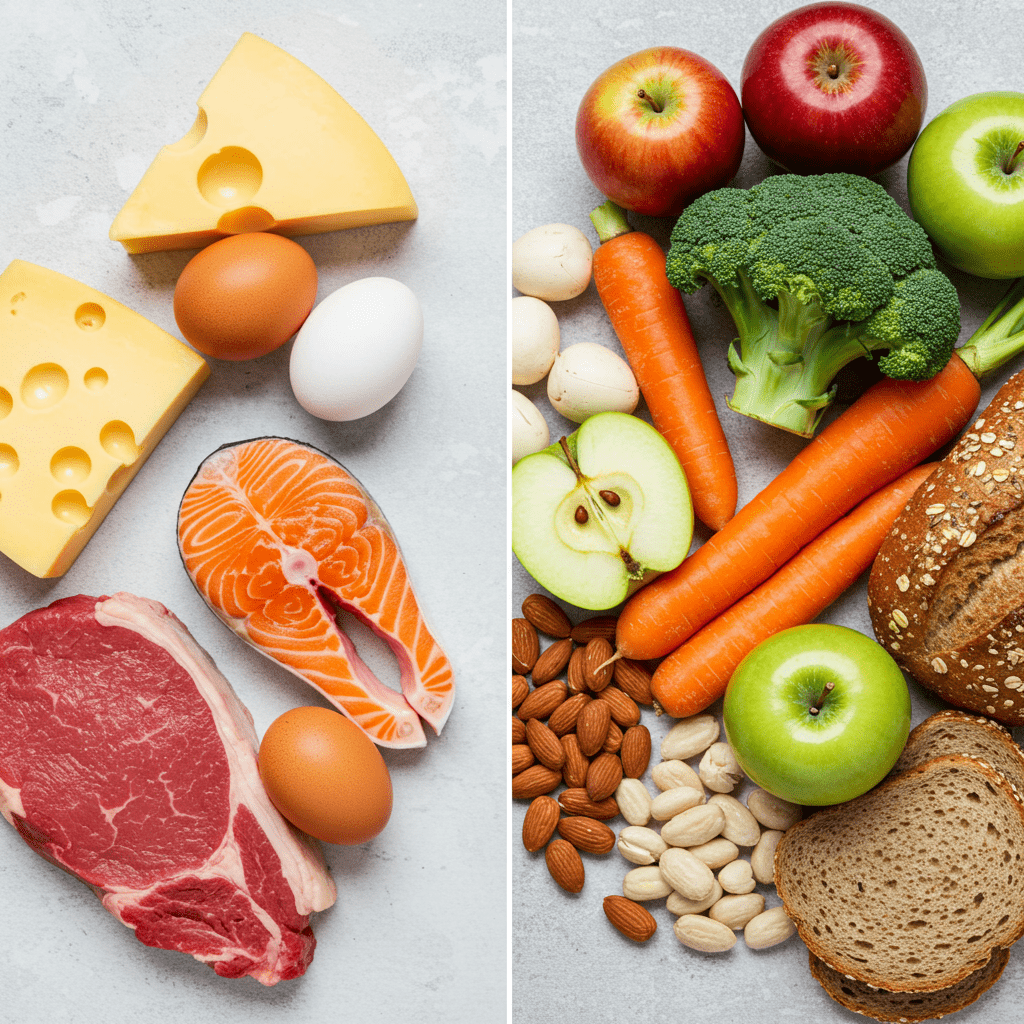What Really Happens When You Only Eat Animal Products?

The animal-based diet, often called the carnivore diet, has gained significant attention online.
Proponents share compelling stories of weight loss, boundless energy, and relief from chronic health issues.
As a Registered Dietitian with over a decade of experience in clinical nutrition, I understand why these stories are so appealing.
When you’re searching for answers to your health concerns, a simple, dramatic solution can seem like the perfect answer.
But my role is to look beyond anecdotes and examine the science.
Is an all-meat diet a sustainable path to health, or does it introduce serious risks?
In this article, we’ll cut through the noise and look at what the body of evidence says about this highly restrictive eating pattern.
What Is an Animal-Based Diet?

An animal-based diet is an eating pattern that includes only meat, fish, eggs, and select dairy products.
It is one of the most restrictive diets, built on the premise that plant foods are not optimal for human health, with some proponents claiming they contain harmful ‘anti-nutrients.
‘ Foods typically included: Meat: Beef, lamb, pork, and game meats.
Organ Meats: Liver, heart, kidney, and brain are often emphasized for their nutrient density.
Poultry: Chicken, turkey, and duck.
Fish and Seafood: Salmon, mackerel, sardines, and shrimp.
Animal Fats: Tallow, lard, and butter.
Eggs: A primary source of protein and fat.
Bone Broth: Valued for its mineral and collagen content.
Limited Dairy: Some versions allow for hard cheeses and raw dairy, while stricter versions eliminate it.
Why Are So Many People Trying This Diet?

The appeal of the animal-based diet is rooted in powerful personal testimonials. Followers often report rapid weight loss, improved mental clarity, reduced bloating, and relief from autoimmune symptoms. From a clinical perspective, some of these initial benefits can be explained.
1. Elimination Effect: By removing all processed foods, sugars, and potential food irritants at once, many people will naturally feel better. This is less about the magic of meat and more about the removal of inflammatory, low-nutrient foods that may have comprised their previous diet.
2. Water Weight Loss: The diet is extremely low in carbohydrates. For every gram of carbohydrate stored in your body, you also store about 3-4 grams of water. Depleting these stores results in a rapid drop on the scale, which is primarily water weight, not fat loss. This can be highly motivating but is not indicative of long-term results.
3. Simplicity and Satiety: Protein and fat are highly satiating. A diet rich in these macronutrients can reduce hunger cues and cravings, naturally leading to a lower calorie intake without active portion control. This simplicity can feel liberating for those tired of complex diet rules.
The Big Question: What Are the Nutritional Risks?

While the initial results can seem promising, as a dietitian, my primary concern is the long-term nutritional adequacy and safety of this diet. Eliminating entire food groups creates significant nutritional gaps and potential health complications.
1. Lack of Fiber: This is perhaps the most significant concern. Fiber, found exclusively in plant foods, is critical for gut health. It feeds beneficial gut bacteria, promotes regular bowel movements, and helps regulate blood sugar and cholesterol. A zero-fiber diet can starve the gut microbiome, potentially leading to an imbalance of bacteria (dysbiosis), constipation, and an increased risk of colon cancer over time. Research published in journals like The Lancet has consistently linked higher fiber intake with a lower risk of all-cause mortality.
2. Nutrient Deficiencies: While animal products are rich in B12, iron, and zinc, they are devoid of or low in several essential micronutrients. Vitamin C, crucial for immune function and preventing scurvy, is almost exclusively found in fruits and vegetables. Similarly, important phytonutrients and antioxidants—compounds like flavonoids and polyphenols that protect against cellular damage—are completely absent. Over time, these deficiencies can compromise immune health, tissue repair, and overall vitality.
3. High Saturated Fat and Cholesterol: The diet heavily relies on red and processed meats, which are high in saturated fat. The American Heart Association recommends limiting saturated fat to 5-6% of daily calories to protect heart health. An animal-based diet far exceeds this, which can raise LDL (‘bad’) cholesterol levels, a well-established risk factor for atherosclerosis (the hardening of arteries) and heart disease, according to a 2019 review in Circulation.
What Does the Long-Term Research Actually Show?

When we evaluate dietary patterns, the gold standard is long-term research involving large populations.
Currently, there are no long-term clinical trials on the health effects of an animal-based diet.
The evidence supporting it is almost entirely anecdotal.
In stark contrast, the evidence supporting plant-inclusive diets is overwhelming.
Large-scale observational studies consistently show that dietary patterns rich in fruits, vegetables, whole grains, and legumes—like the Mediterranean diet—are associated with lower rates of chronic diseases.
The World Health Organization’s International Agency for Research on Cancer (IARC) classified processed meat as a Group 1 carcinogen (known to cause cancer) and red meat as a Group 2A carcinogen (probably causes cancer), based on extensive evidence linking them to colorectal cancer.
While some may feel better initially, we cannot ignore the mountain of evidence that points to the long-term risks of a diet high in red meat and devoid of protective plant compounds.
From a risk-management perspective, adopting a diet with no proven long-term benefits and significant potential risks is not a sound health strategy.
Is There a Better Way to Achieve Your Health Goals?

Absolutely.
It’s crucial to acknowledge the problems that lead people to try an animal-based diet—inflammation, weight gain, and digestive issues are real concerns.
However, an extreme, restrictive approach isn’t the only—or the best—solution.
A balanced, evidence-based approach can deliver the same benefits without the nutritional risks.
Instead of complete elimination, focus on inclusion and upgrading: Prioritize Whole Foods: Build your plate around high-quality protein (from both animal and plant sources), healthy fats, and an abundance of colorful vegetables.
This naturally pushes out ultra-processed foods.
Focus on Fiber: Aim for 25-30 grams of fiber per day from sources like leafy greens, berries, avocados, nuts, and seeds.
This supports a healthy gut and promotes satiety.
Choose Leaner Proteins: Emphasize fish, poultry, eggs, and legumes, while treating red meat as a smaller component of your diet rather than the centerpiece.
Identify Personal Triggers: If you suspect certain foods are causing issues, an elimination diet guided by a professional can help you identify specific triggers (like gluten or dairy) without unnecessarily cutting out all plants.
This balanced approach is not only supported by decades of research for long-term health and disease prevention but is also far more sustainable, flexible, and enjoyable for life.
Conclusion
While the animal-based diet may offer short-term relief for some by eliminating processed foods and promoting satiety, it is not a nutritionally complete or scientifically supported strategy for long-term health.
As a Registered Dietitian, I cannot recommend a diet that creates such significant risks for nutrient deficiencies, gut dysbiosis, and potential cardiovascular disease.
The principles of good nutrition are not about extreme restriction, but about building a diverse, nutrient-dense plate.
Your path to feeling great doesn’t require you to give up the vast benefits of plant foods.
Instead, focus on a balanced intake of whole foods that nourish your body, support your health goals, and that you can genuinely enjoy for years to come.
